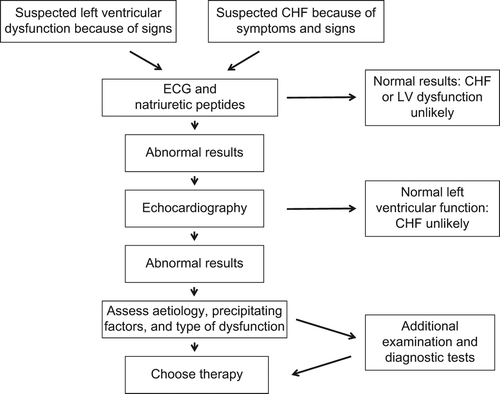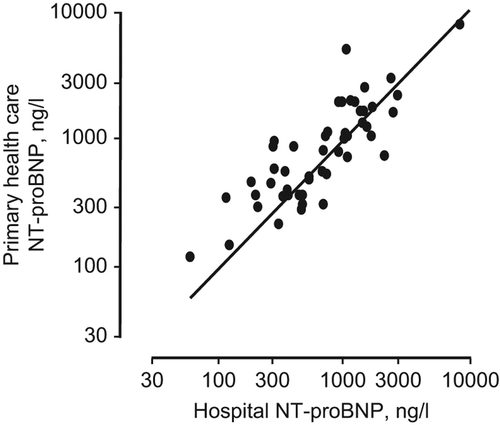Figures & data
Figure 1. The algorithm for diagnosing congestive heart failure. The algorithm for diagnosing CHF according to prevailing Swedish recommendations, and based on European guidelines (Citation13,Citation14). Symptoms suggestive of CHF include dyspnoea at rest or during effort, tiredness, nocturnal dyspnoea or cough, nocturia, loss of appetite, nausea, depression, abdominal pain, and difficulty concentrating. Signs suggestive of CHF include pulmonary rales, peripheral oedema, tachycardia, jugular vein distension, hepatomegaly, tachypnoea, S3 or S4 gallop rhythm, pleural effusion, and ascites. Patients with suspected CHF because of symptoms and signs, or signs suggestive of left ventricular dysfunction; together with an abnormal ECG and/or elevated value of NT-proBNP were eligible for inclusion.

Table 1. Values of NT-pro BNP to facilitate decision making in primary care according to prevailing Swedish recommendations on the management of CHF.
Table 2. Baseline demographics and findings of patients with suspected new onset CHF on referral, according to a confirmed diagnosis of CHF or not. Data are presented as mean values ± SD or proportions, as appropriate.
Figure 2. NT-proBNP values obtained at the primary care centre and the hospital outpatient clinic. The solid line represents the line of identity.

